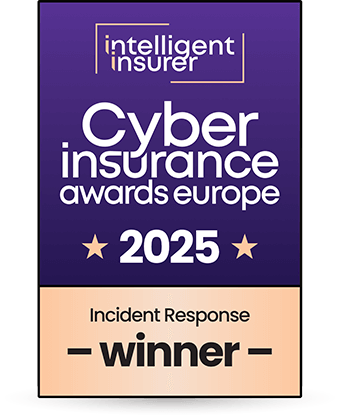What starts as a normal working day can quickly take a turn for the worse at the sight of encrypted files and ransom demands sprawled across every screen. The immediate panic subsides, but what comes next?
The average cost of ransomware recovery in 2024 reached just over £2 million ($2.73 million), with organisations experiencing an average of 21 days of downtime following an attack. These staggering figures highlight a critical truth: post-ransomware attack recovery extends far beyond simply restoring systems.
How do you ensure your business doesn't just survive the immediate crisis, but emerges stronger and more resilient? The key lies in understanding that effective ransomware recovery involves both immediate response and long-term strategic planning to prevent future incidents.

Immediate Recovery After a Ransomware Attack
When ransomware strikes, your first priority must be containing the damage and initiating systematic recovery procedures. Recovery costs can be up to 10 times the ransom amount, with downtime being the most costly aspect of a ransomware attack. This stark reality underscores why incident response and business continuity planning cannot be afterthoughts.
Restoring systems requires careful prioritisation: critical business functions first, followed by secondary systems. During this phase, maintaining business continuity becomes paramount. You'll need to assess which systems can operate offline, identify alternative workflows, and communicate transparently with stakeholders about recovery timelines.
For detailed guidance on immediate response procedures, our comprehensive blog outlines the essential dos and don'ts if you've been hit by a ransomware attack, ensuring you implement ransomware prevention best practices from day one of recovery.
Building Long-Term Cyber Security Resilience
Now that immediate recovery is underway, the focus must shift to building ransomware resilience that prevents future attacks and minimises potential downtime. Resilience isn't simply about having backups; it's about creating a comprehensive security ecosystem that can adapt and respond to evolving threats.
Key resilience-building measures include implementing robust backup strategies with offline components, establishing network monitoring systems that detect unusual activity, and developing incident response procedures that can be activated within minutes rather than hours.
Ransomware recovery shouldn’t be viewed as a one-time event, but rather as an opportunity to fundamentally strengthen your organisation’s cyber defences. This means investing in technologies and processes that not only restore operations but also provide early warning systems for future threats, ensuring your business can withstand and quickly recover from subsequent attacks.


Implementing Cyber Security Best Practices
Next, we'll explore the fundamental security practices that form the backbone of effective post-ransomware attack cyber security.
These essential ransomware prevention best practices include:
- Patch Management: Establish automated patch deployment for critical systems while maintaining testing protocols for mission-critical applications. Attackers frequently exploit known vulnerabilities that remain unpatched across business networks, making this your first line of defence.
- Advanced Endpoint Protection: Move beyond traditional antivirus software to solutions that include behavioural analysis and threat hunting capabilities. Modern endpoint protection can detect and respond to threats that bypass perimeter defences.
- Network Segmentation and Access Control: Create multiple barriers between attackers and your most valuable assets by implementing zero-trust principles. This ensures that even if one system becomes compromised, the damage remains contained within isolated network segments.
These security measures work synergistically to create layered protection: strong patch management reduces entry points, advanced endpoint protection detects threats that do penetrate, and network segmentation limits the scope of any successful breach.
Conducting Post-Incident Reviews
To learn more about strengthening your defences, conducting thorough post-incident reviews provides invaluable insights into how attackers accessed your systems and what vulnerabilities they exploited. This systematic analysis of the attack timeline, from initial breach to discovery, reveals critical gaps in your security posture that must be addressed.
Lessons learned from the attack should encompass both technical failures (unpatched systems, inadequate monitoring) and procedural weaknesses (delayed response times, communication breakdowns). The review process should involve all stakeholders, from IT teams to senior management, ensuring that ransomware resilience becomes an organisation-wide priority rather than solely an IT concern.
Applying findings to strengthen systems requires translating these lessons into concrete actions: updating security policies, revising access controls, and enhancing monitoring capabilities.
This comprehensive approach to post-incident analysis transforms a costly security breach into a strategic opportunity - implement ransomware prevention best practices that address your organisation's specific vulnerabilities and risk profile.


Refining Incident Response and Business Continuity Plans
Developing robust incident response and business continuity procedures requires actionable plans that can be executed under pressure. Your procedures should outline specific roles, communication protocols, and decision-making hierarchies that remain effective when key personnel are unavailable.
Business continuity planning must address realistic scenarios: what happens if your primary data centre becomes inaccessible, or if key suppliers are compromised? Post-ransomware attack recovery experiences provide invaluable insights that dramatically improve these plans, revealing which procedures worked effectively and where communication broke down.
Regular testing through monthly tabletop exercises and annual simulations helps identify gaps before they become critical vulnerabilities, ensuring swift, effective response to future incidents.
Organisational Cyber Resilience
Strengthening post-ransomware attack cyber security requires building human defences alongside technical ones, as employees often represent both your greatest vulnerability and your strongest asset in preventing future attacks.
Employee awareness and training programmes must go beyond annual compliance sessions to create ongoing security consciousness throughout your organisation. Our detailed blog on empowering employees to spot and report ransomware threats provides practical guidance for developing this capability, while our employee training for ransomware prevention blog outlines structured approaches to building security awareness.
Ongoing monitoring and threat detection systems provide the technological foundation for organisational resilience, but they require skilled interpretation and response. Partnering with cyber security experts ensures you have access to specialist knowledge and rapid response capabilities when threats emerge.
Our Solace Cyber ransomware recovery service combines technical expertise with strategic guidance, helping organisations not just recover from attacks but emerge with stronger, more resilient security postures that protect against future threats.

Secure Your Business Against Future Ransomware Threats
Post-ransomware attack recovery is only the beginning of your cyber security journey. Building genuine ransomware resilience requires ongoing commitment to best practices, regular security assessments, and proactive threat monitoring.
Don't wait for another attack to expose vulnerabilities in your defences. If you think you have been hacked or are experiencing a ransomware attack, contact our expert team immediately on 01202 308818 or complete our contact form for urgent assistance.
As an assured service provider with 24/7 response capabilities, Solace Cyber provides same-day deployment and comprehensive digital forensics to help you recover quickly and strengthen your security posture for the future.


